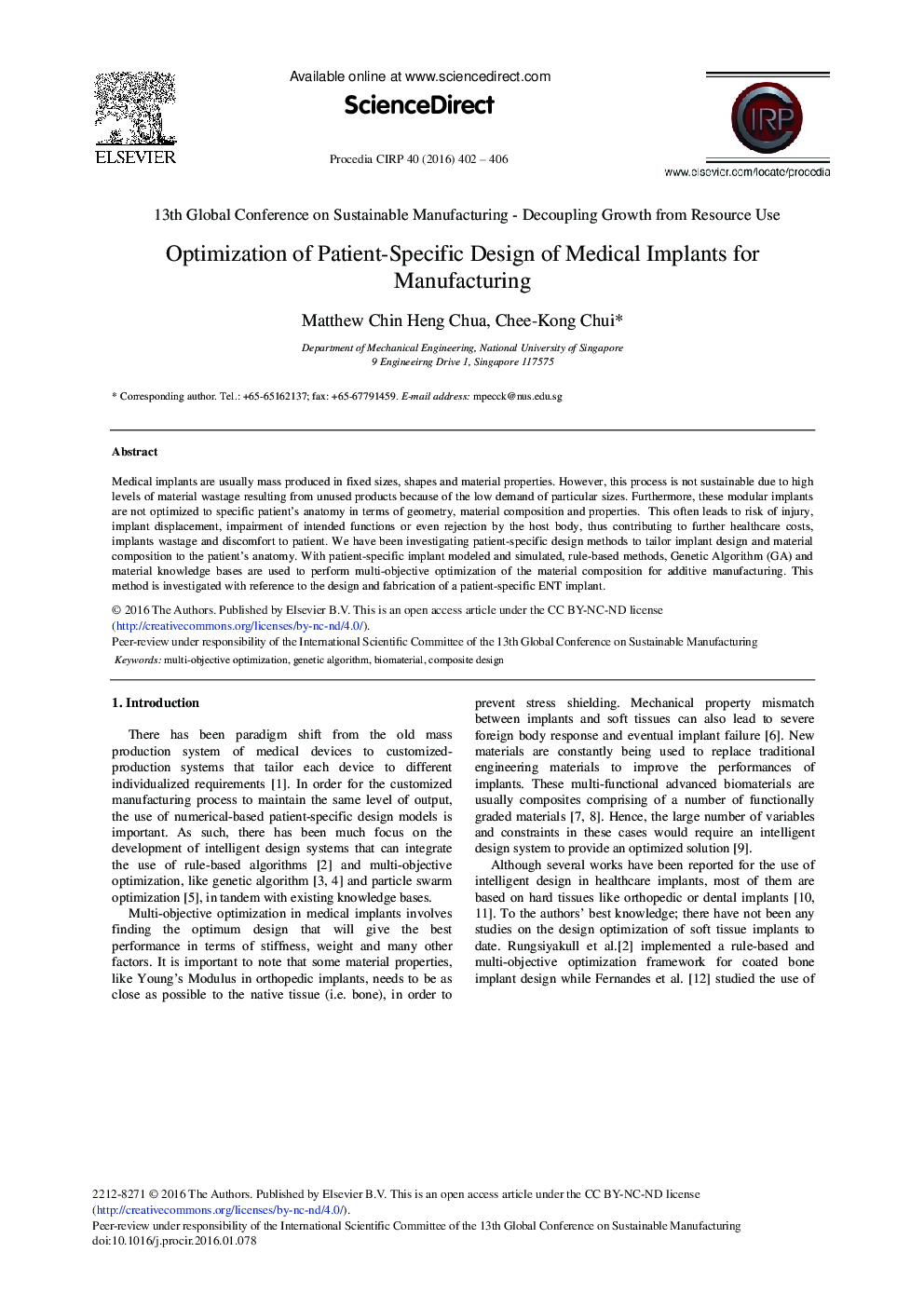| Article ID | Journal | Published Year | Pages | File Type |
|---|---|---|---|---|
| 1699078 | Procedia CIRP | 2016 | 5 Pages |
Medical implants are usually mass produced in fixed sizes, shapes and material properties. However, this process is not sustainable due to high levels of material wastage resulting from unused products because of the low demand of particular sizes. Furthermore, these modular implants are not optimized to specific patient's anatomy in terms of geometry, material composition and properties. This often leads to risk of injury, implant displacement, impairment of intended functions or even rejection by the host body, thus contributing to further healthcare costs, implants wastage and discomfort to patient. We have been investigating patient-specific design methods to tailor implant design and material composition to the patient's anatomy. With patient-specific implant modeled and simulated, rule-based methods, Genetic Algorithm (GA) and material knowledge bases are used to perform multi-objective optimization of the material composition for additive manufacturing. This method is investigated with reference to the design and fabrication of a patient-specific ENT implant.
